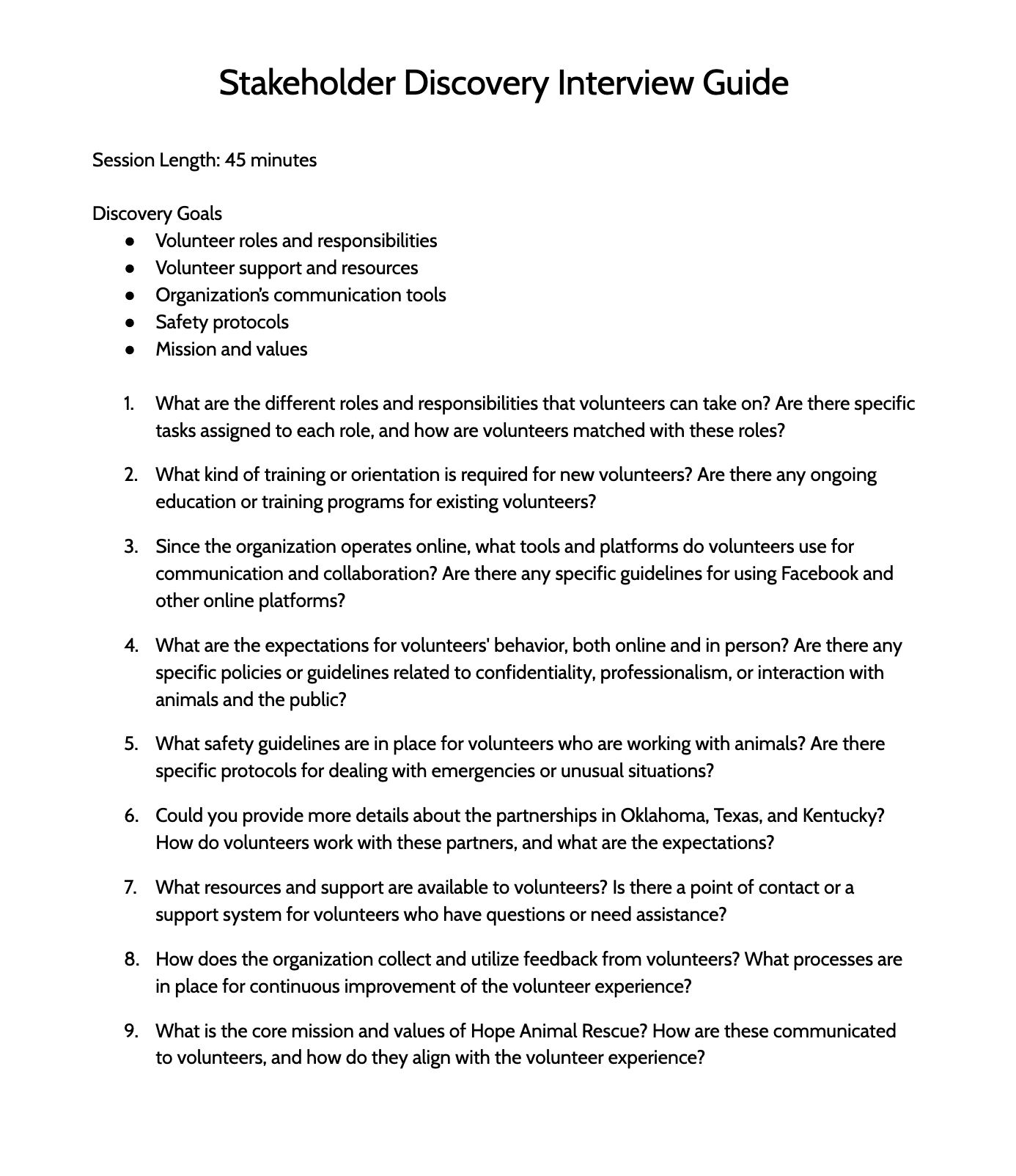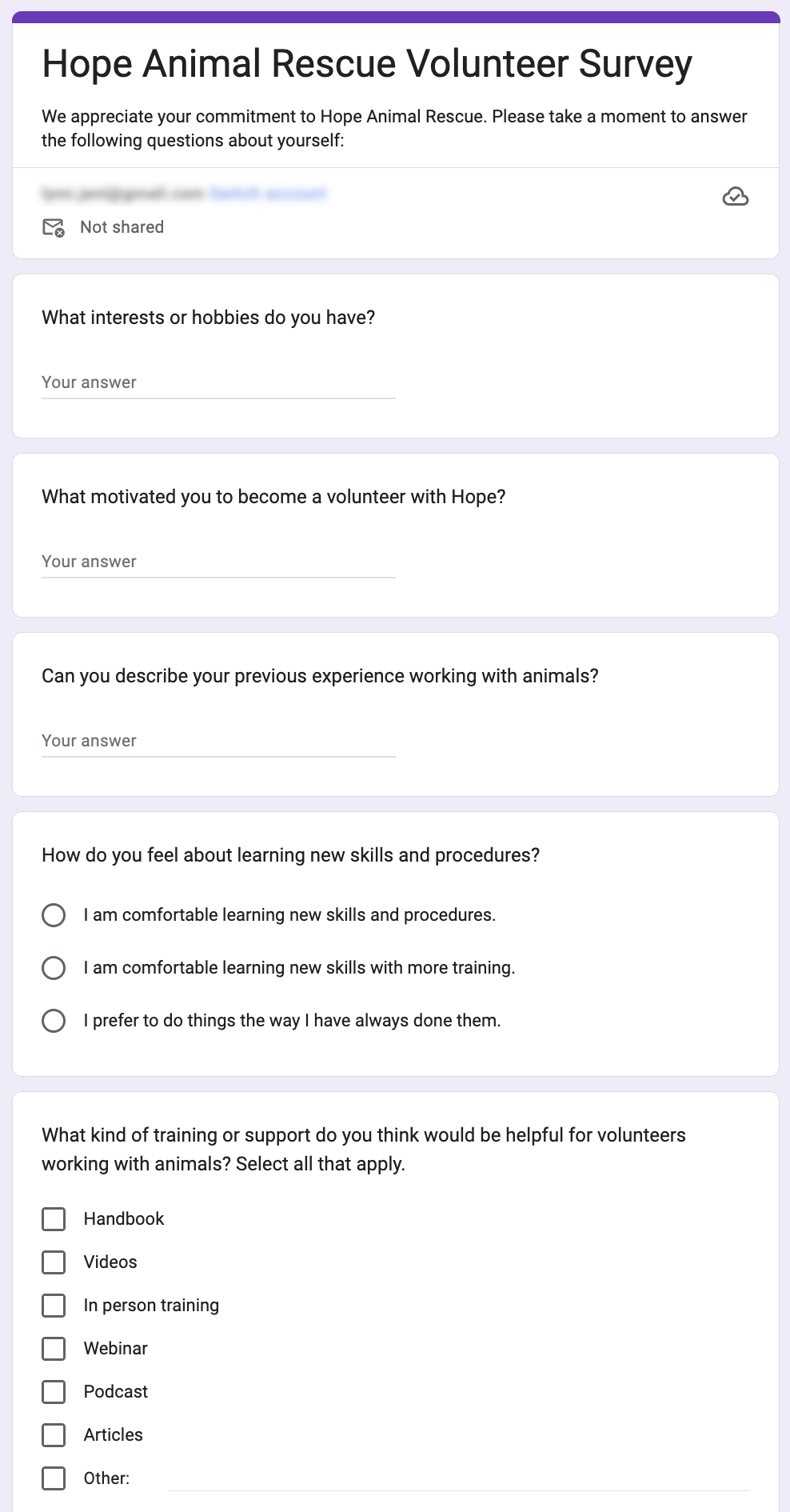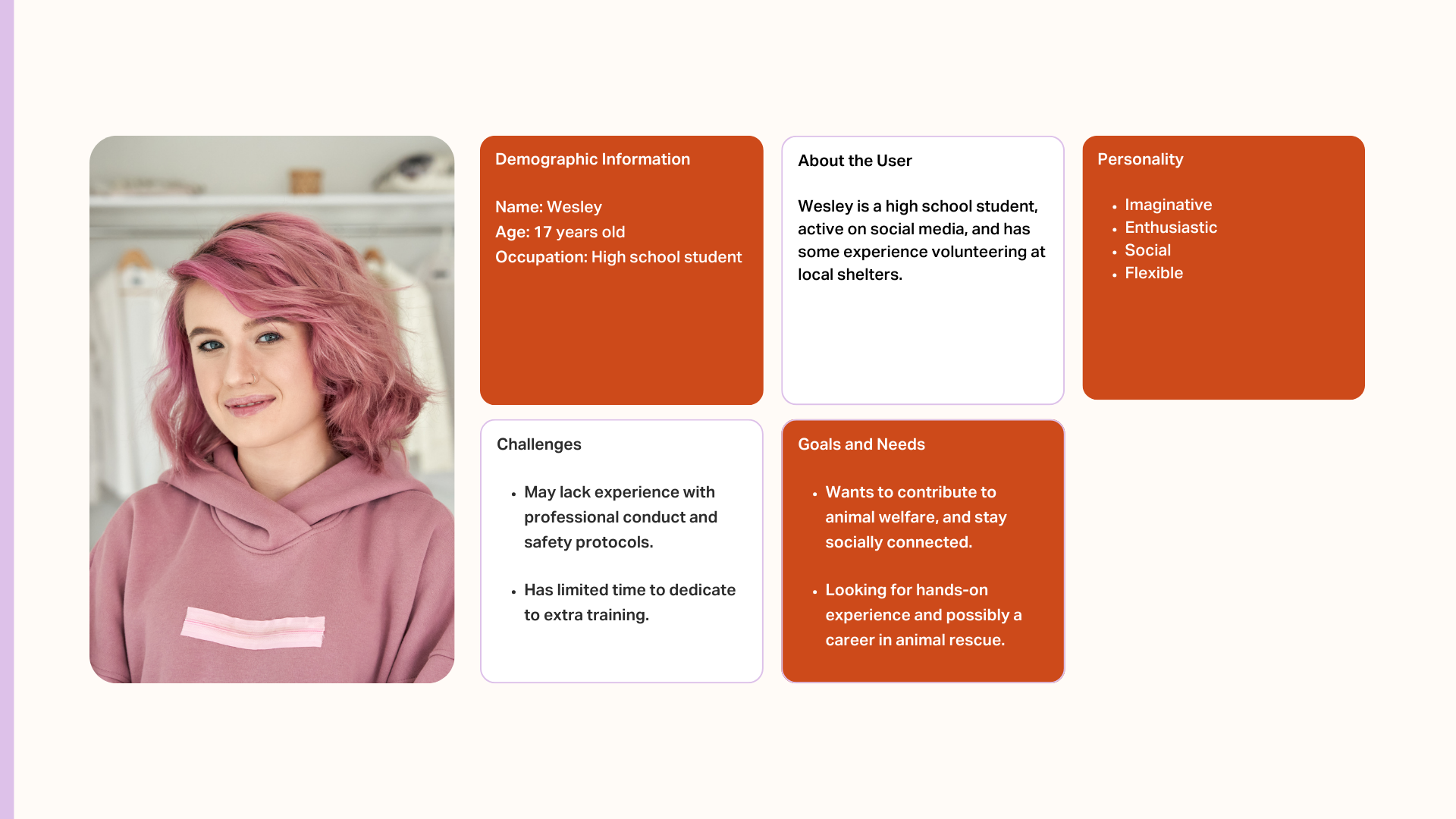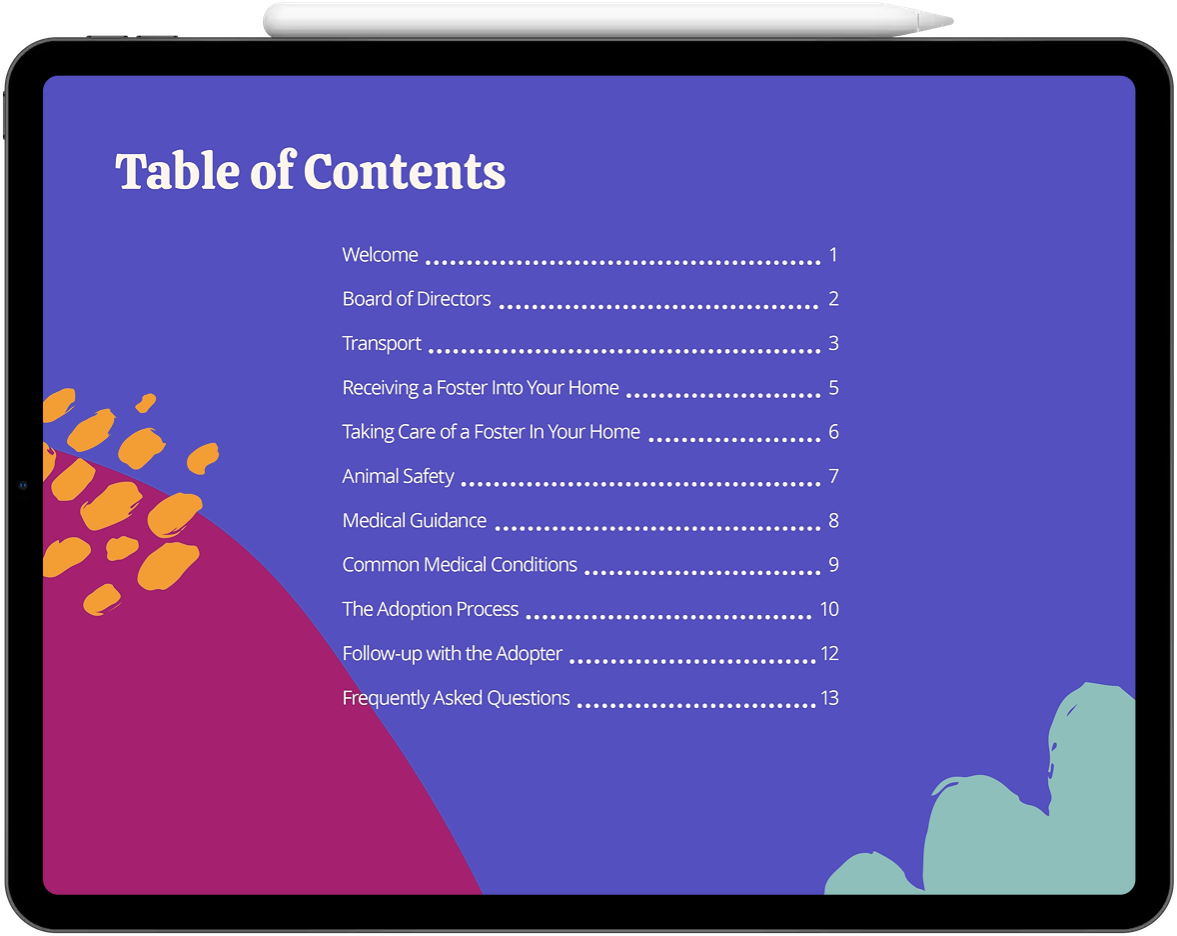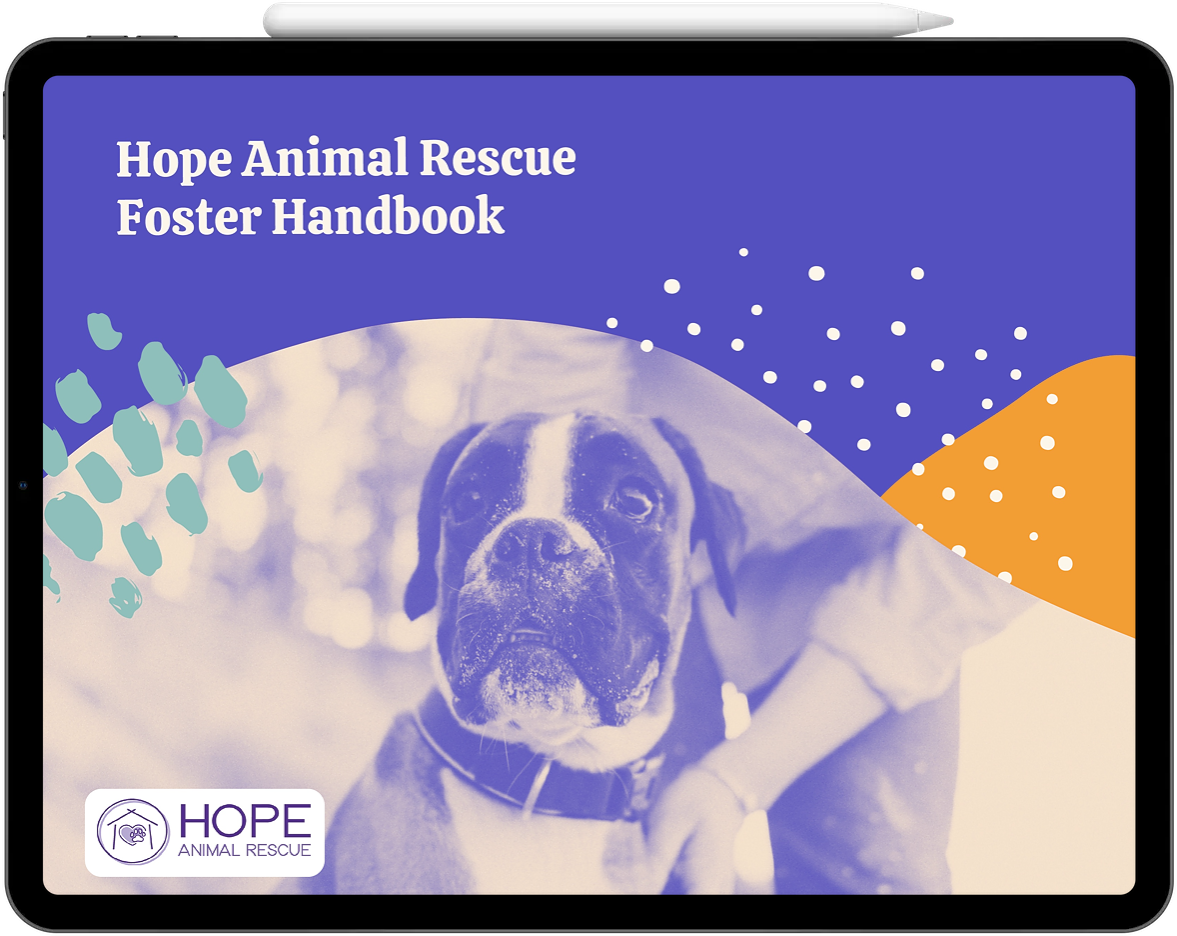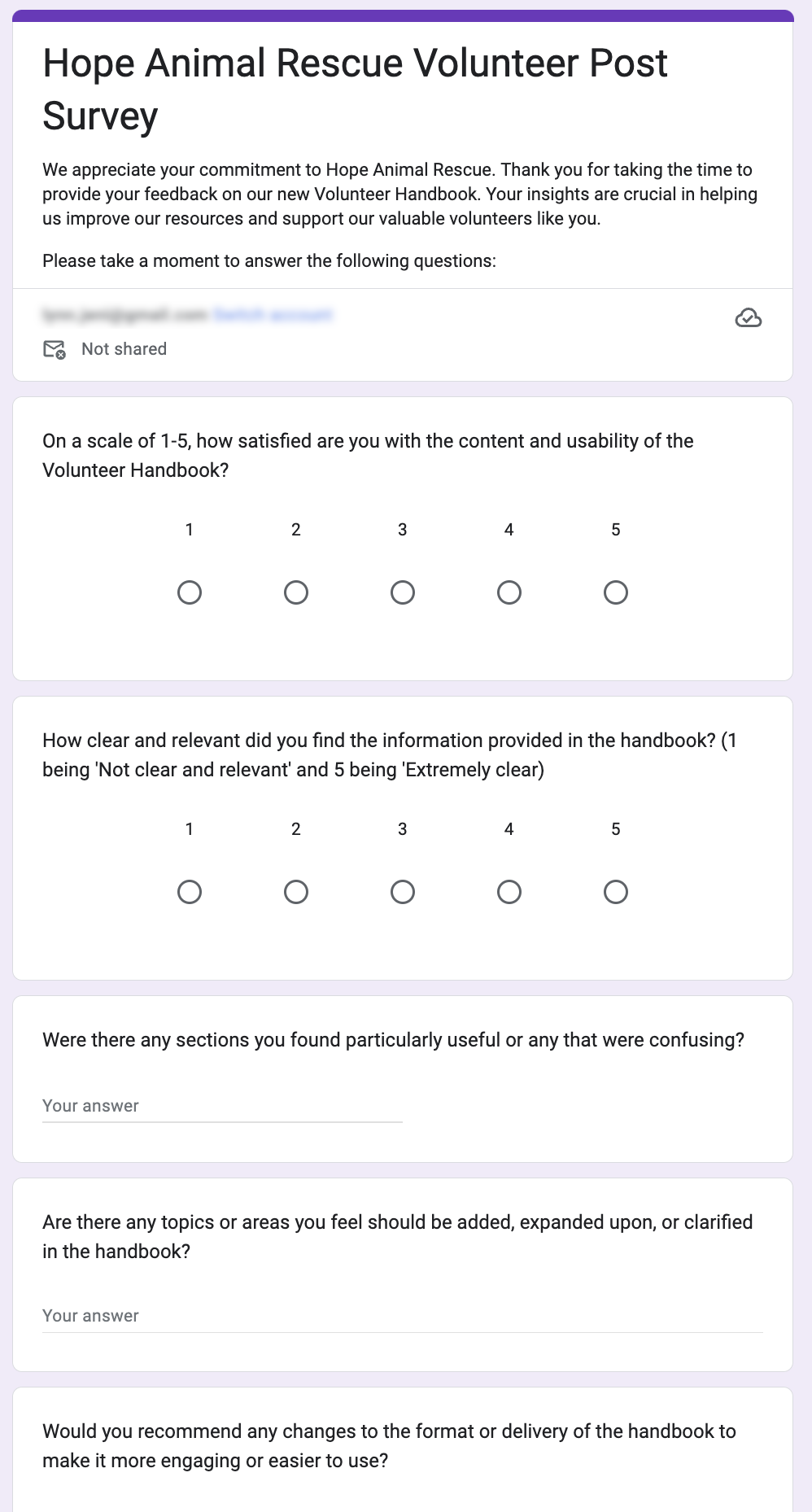Transforming Volunteer Engagement at Hope Animal Rescue
Background
Hope Animal Rescue is a volunteer-driven organization based in central Iowa, extending its services through partnerships in Oklahoma, Texas, and Kentucky. The organization operates without a physical office, utilizing digital platforms, primarily Facebook, for coordination and communication. It encompasses a diverse volunteer base, with individuals ranging from 16 to 65 years old, engaging in various aspects of animal rescue and care.
Details
Client: Hope Animal Rescue
Target Audience: Volunteers
My Role: Instructional Designer, Project Manager, Graphic Designer, Subject Matter Consultant
My Tools: Adobe InDesign, Adobe Illustrator, Adobe Photoshop, Camtasia, Notion
Deliverables: Volunteer Guide, Video Series
Challenge
Hope Animal Rescue, a dedicated organization with volunteers across multiple states, faced a unique challenge: Unifying their training and information dissemination without a central physical office.
Volunteers at Hope Animal Rescue, aged 16 to 65, currently face obstacles in accessing consistent, clear, and comprehensive information about their roles, responsibilities, and best practices for animal care due to the absence of a centralized physical office and reliance on a social media app. This situation leads to varied levels of understanding and engagement, potentially impacting the quality of care for foster animals and the overall effectiveness of the rescue operations. Our mission was clear – to create an engaging, informative, and accessible volunteer handbook.
“How can we develop a comprehensive volunteer handbook that enhances volunteers' understanding of their roles, reduces veterinary costs and behavioral issues in foster dogs, and improves volunteer engagement and retention?”
Solution
My strategy blended instructional design with user experience (UX) principles, ensuring the handbook was informative and a delight to use. I conducted analysis and crafted learner personas to ensure every volunteer found the handbook relevant and engaging.
Analyze / Empathize / Define
I identified the needs and goals of the handbook. Through interviews and questionnaires, I gathered information about the target audience and the animal shelter from volunteers and Hope’s board of directors. Then, I defined the project objectives and determined the content and format of the handbook.
Project Goals:
Develop a comprehensive volunteer handbook that increases volunteers' understanding of their roles, responsibilities, and protocols, as measured by pre-and post-assessments.
Provide guidance on recognizing and managing common health issues in foster dogs, aiming to reduce non-urgent veterinary visits by at least 15%, resulting in significant cost savings.
Design the handbook with diverse learner personas in mind, ensuring user-friendly and tailored content that enhances volunteer satisfaction and engagement to improve retention rates by 20%
Interviews and Questionnaires
Volunteer Personas
Develop / Implement
During the design phase, I created a detailed plan for the handbook, including the structure, layout, and visual design. Hope had numerous documents that were outdated or contained duplicate information. Part of the process was streamlining the information and ensuring the content matched the needs of the volunteers, such as knowing how and when to provide medical care.
Before
After
The interactive PDF includes video tutorials of common tasks volunteers will do while fostering a dog.
This project was featured on an episode of Instructional Designers in Officers Drinking Coffee. Watch to learn more about the process behind the project!
Evaluate / Test
The guide was tested on a small group of users to gather feedback, iterate as part of the implementation, and review with stakeholders.
Feedback Surveys
Project Impact
The volunteer handbook created for Hope Animal Rescue has had a tangible impact on reducing veterinary costs for the organization. One of the key sections in the handbook provided detailed guidance on recognizing and managing common health issues in foster dogs, including prevention measures, initial care, and when to seek professional help.


